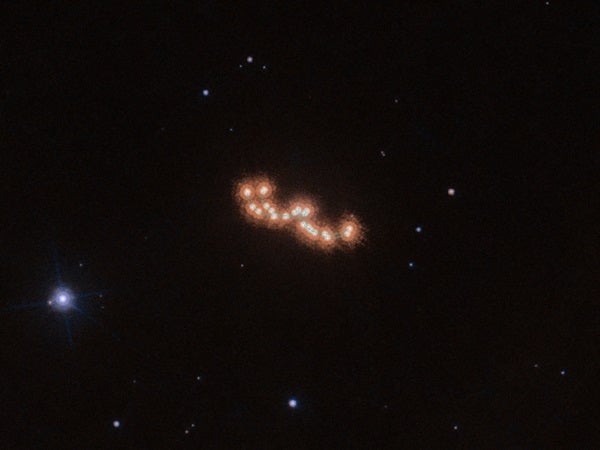A team of astronomers led by Luigi Bedin watched the two visible stars, Luhman 16 A and Luhman 16 B, over the course of three years between August 22, 2014, and October 4, 2016. During this time, HST has imaged the system 12 times (with a thirteenth proposed “visit” in August 2018). Using these images, they were able to determine several orbital parameters of the stars, as well as more accurately measure their distance and search for any potential exoplanets in the system. Their results have been accepted for publication in the Monthly Notices of the Royal Astronomical Society.
Bedin and his team used their sequence of Hubble images to watch the two brown dwarfs “dance” across the sky. In particular, they were looking for a third potential body in the system, such as a large exoplanet, which had been indicated by the stars’ motion in previous observations with the European Southern Observatory’s Very Large Telescope. However, according to Bedin’s group, the new Hubble measurements rule out the presence of a third body in the system, all the way down to planets of Neptune’s mass with a period between one and two years. Thus, if the system does harbor exoplanets, they must be smaller than Neptune and take longer than one to two Earth years to circle their sun.
Brown dwarfs are often called “failed stars” because they are too small to sustain the fusion processes that create energy inside stars. While these bodies can sometimes fuse a hydrogen isotope known as deuterium, even this phase doesn’t last very long, relatively speaking, leaving the star to essentially cool off over cosmic time and grow dark.
However, astronomers know that there are many more low-mass objects in the universe than high-mass ones. Thus, because of their increased number, these lower-mass objects are an extremely fertile place to look for exoplanets.
Luhman A and B circle each other once every two to four decades, with a distance between them of about 3 astronomical units (three times the distance between the Sun and Earth). The system itself is located within about 2 parsecs of the Sun, or 6.5 light-years. Only the Alpha Centauri system and Barnard’s Star are closer.
Because the Luhman 16 AB system is so close to the Sun, it’s the perfect place to study brown dwarfs, which are hard to see because they’re both small and dim, up close. Bedin’s team plans to continue their study of the stars to both improve the precision of their measured orbital parameters and to search for ever-smaller, Earth-sized exoplanets in the system.










